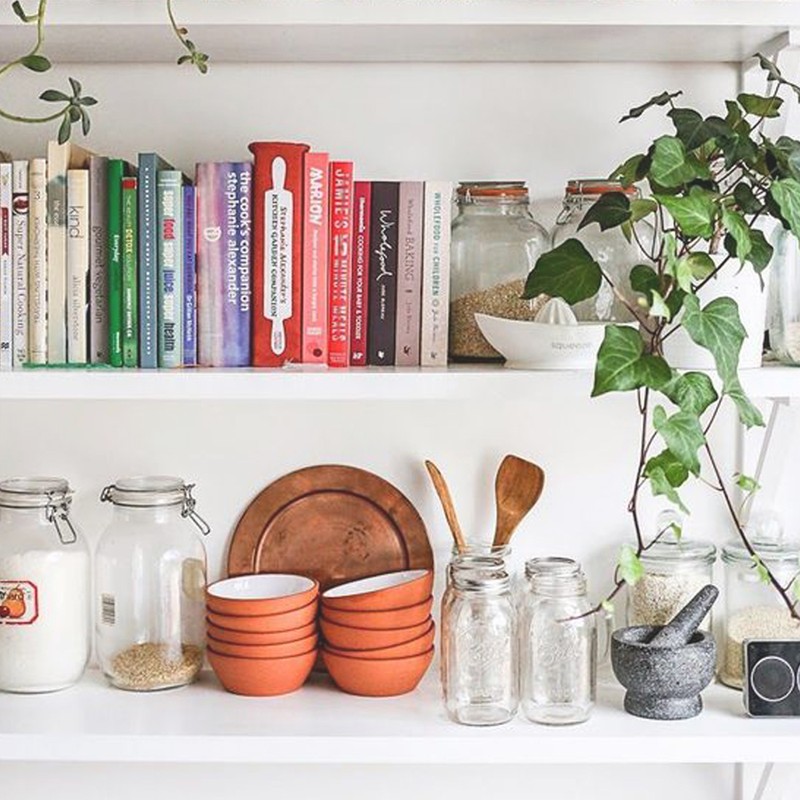The Spring Cleaning Advice That Will Change Your Life
1. Find Your Reason
Before you embark on the mammoth slog that is a spring clean, have a think about why you want to do it. As organisational guru Marie Kondo advises, start by envisioning the life you want to lead – write it down and really imagine the details. Then ask yourself how your home is currently serving that vision.
Whether it’s the head-clearing benefits of living in a clean, decluttered space; ensuring your house is free of dust and bacteria to help keep you healthy; or preventing stressful worst-case scenarios like insect infestations come summer, pinpointing your motivation can really help when you’re five hours deep in a sorting spree and never want to look at a bin bag again.
2. Create A Room-By-Room Plan
When it comes to major house cleaning and decluttering sessions, it’s often far easier – and less overwhelming – to focus on one room or area at a time. Forget Marie Kondo’s method here: if you’re sorting all the books in the house at once, whilst simultaneously cleaning, you’ll have nowhere to escape to when it all gets too much.
Before you start, make room-by-room checklists of everything that needs to be done. These lists should include both standard weekly cleaning activities (hoovering; tidying; dusting surfaces) and larger seasonal tasks (clearing out cupboards; dusting ceilings, doors and light fittings; washing windows and walls). See our suggestions below, or check out IDreamOfClean.net for the ultimate house-wide checklist.
Bedrooms: Organise wardrobes; clean bags and shoes; air out mattresses, then flip and rotate them; dry clean duvet and pillows; switch seasonal clothing and place in air-tight storage; clean thoroughly under beds.
Bathrooms: Deep clean tiles and flooring; clean air vents; disinfect toothbrush holders; polish taps; unblock sinks and plugholes; reseal tile and grout, if needed; discard expired beauty products.
Kitchen: Deep clean oven, hob, microwave, dishwasher and fridge; defrost the freezer; clean cupboards and draws, throwing away expired food items; wash walls and cabinets; check smoke and carbon monoxide detectors; clean bin.
Living Room: Empty and dust bookshelves; clean fireplace; wash throw pillows and blankets; wash and/or air out curtains and blinds; clean rugs, carpets and upholstery.
Outdoors: Mow garden and trim shrubbery; clean doormats; scrub outdoor furniture; sweep and hose down walkways, porch and deck floors; wash outside windows; clean gutters.
3. Build Your Cleaning Arsenal
There’s nothing more frustrating than gearing yourself up for a cleaning session, only to realise you need to pop out and buy something. Once you’ve made your activity list for each room, take stock of what cleaning products and supplies you have, and what you need.
Then, when your arsenal is complete, try making a handy cleaning caddy you can easily carry with you to each room – think dusting cloths, sponges, cleaning sprays and bin bags in a small plastic storage box. This way, you can avoid constantly going back and forth to the kitchen sink, or cradling armfuls of supplies around the house.
4. Stick To A Schedule
The key to avoiding spring cleaning stress? Create a schedule based around your own cleaning ‘style’. Not only does it make a huge task seem more manageable, you’ll be more likely to stick with it too. According to Better Homes & Gardens, most people fall into one of the following cleaning categories:
One and done: Like to get everything out of the way at once so you can focus on other things? Set aside one day to blitz through it all. If one very long block of cleaning feels like too much, or you have a large home, split your list in half and tackle it over one or two days.
Timed sessions: Decide which days you’ll clean and for how long, such as 30 minutes, then set a timer and start at the top of your list. Clean until the timer rings. On your next scheduled cleaning day, pick up where you left off. Repeat.
A Room a day: Count up the rooms in your home and assign specific areas to specific days. For example, Monday: kitchen; Tuesday: bathrooms; Wednesday: bedrooms, and so on.
5. Cut Yourself Some Slack
It’s an age-old saying: the best-laid plans often go awry. If you haven’t stuck to your schedule, don’t beat yourself up – simply replace the tactics that didn’t work with new ones and try again. Be realistic too – spring cleaning can take some serious time, especially if you’re getting anything like carpet or furniture cleaning outsourced.
And another top tip? Enlist the help of your family, partner or housemates – if you live with other people, cleaning shouldn’t be a solo job. As for those people who always try and get out of helping, try sitting down with them when you make your cleaning schedule and work out when they have time to pitch in (if they agree in advance, they’ll be less likely to flake on you later).
6. Make A Maintenance Plan
Arguably the worst part of cleaning: no matter how spotless your home, all your hard work will soon undo itself as dirt and clutter inevitably build up again. To stay on top of things, why not create a long-term cleaning schedule? By listing both weekly and monthly tasks – i.e. ones that often get left out of regular cleans like ovens, skirting boards and light fixtures – your cleaning workload will never get as heavy again.
Finally, while spring cleaning is important, autumn cleaning is just as vital. Especially if you or anyone in your family has allergies – performing a thorough clean in late September ensures all the pollen and dirt brought in during the summer months isn’t left sitting around.
DISCLAIMER: We endeavour to always credit the correct original source of every image we use. If you think a credit may be incorrect, please contact us at info@sheerluxe.com.


